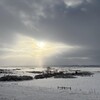- 1861: The Thomas and Augusta Moorhouse family traveled over the Oregon Trail from Iowa to the Walla Walla Valley. Augusta was the first Adventist in the Pacific Northwest.
- 1874: Isaac and Adelia Van Horn arrived in the Walla Walla Valley as the Northwest's first Adventist missionary couple. In 1876 they and their assistant, Alonzo T. Jones, shifted their efforts to the Willamette Valley, making their home in Salem.
- 1874: Isaac Van Horn organized the first Adventist church in the Northwest in Walla Walla, Washington Territory. Other early churches included Milton, Oregon (1876); Dayton, Washington Territory (1876); Salem, Oregon (1877); Beaverton, Oregon (1878); Damascus, Oregon (1879); East Portland, Oregon (1882); Farmington, Washington Territory (1883); and Coquille, Oregon (1883).
- 1877: The North Pacific Conference was organized to coordinate the denomination’s efforts in the Pacific Northwest. In 1880, it launched the Upper Columbia Conference to better promote Adventism east of the Cascade Mountains.
- 1880: The first attempt by Adventists to evangelize the Puget Sound took place by book salesman A.W. Benson. By 1886, a church had been established in Seattle, followed by one in Tacoma the next year.
- 1885: Denominational leaders sent J.J. Smith to work in the Boise area and southern Idaho Territory; he soon died of peritonitis. Daniel Fero followed from Pennsylvania and organized churches in Boise City and Franklin in 1886.
- 1886: The small conferences of the North Pacific Conference (301 members) and Upper Columbia Conference (240 members) started the denomination’s fourth and fifth post-elementary schools — North Pacific Academy in Portland and Milton Academy in Milton, Oregon. Both schools closed in the early 1890s. Walla Walla College opened in 1892.
- 1888:General Conference leaders sent O.A. Johnson (1888) and Daniel Fero (1889) to Montana Territory to conduct evangelistic meetings during the summer months. The next year, J.W. Watt of Missouri was asked to permanently locate in the region, where he started churches in Livingston (1890) and Bozeman (1891).
- 1893: Lewis Belknap, a doctor, established a sanitarium in Portland. During the first decade of the 20th century, small sanitariums were operated by Adventists in Spokane Falls, College Place, Seattle, Tacoma, Bellingham, Yakima, Port Townsend, Boise, Missoula, Salem and Cottage Grove. Most closed either before or during the Great Depression.
- 1901: Following her return from Australia, Ellen White made a trip to the Pacific Northwest. She visited the Upper Columbia Conference camp meeting in Waitsburg, Walla Walla College and Sanitarium, Portland Sanitarium, and the North Pacific Conference camp meeting. She had made earlier trips to the Northwest in 1878 (for the Northwest’s first camp meeting in Salem), 1880 and 1884.
- 1902: The North Pacific Conference changed its name to the Western Oregon Conference. That same year it also spawned the Western Washington Conference, with headquarters in the Seattle area to better serve the western portions of the state.
- 1907: The Upper Columbia Conference spawned the Southern Idaho Conference, with headquarters in Boise to better serve the territory of southern Idaho and eastern Oregon.
- 1920s: Because of the influence of Ellen White’s writings and an education reform movement at Battle Creek College, the number of church-operated elementary schools rose from 18 to more than 200 by the turn of the century. This education emphasis also resulted in every conference in the Northwest except Alaska establishing a secondary boarding school by the early 1920s.
- 1932: Western Oregon Conference spawned the Southern Oregon Conference in 1910 to better serve the territory of southwestern Oregon. Because of the economic challenges during the Great Depression, the two conferences reunited in 1932.
- 1951: The Harris family donated their thriving business (Harris Pine Mills) in Pendleton, Oregon, to the Adventist Church. This company operated many branch factories near Adventist schools, which provided work for students. Harris Pine Mills closed in 1986.
- 1984: Alaska became a conference. The first Adventist missionaries had arrived in 1901.
- 1984: Pacific Press Publishing Assocation — started by the church in 1874 to serve the American West — moved its headquarters and printing operations to Nampa, Idaho.
- 2020: The North Pacific Union Conference has significantly less population to reach (15.5 million) than any other union in the North American Division, but it has a considerably better member to population ratio (1 to 151) than the other unions. The Upper Columbia Conference has the best member-to-population ratio (1 to 77) of the Northwestern conferences.
Extra Dates
- 1906: The North Pacific Union Conference was organized to oversee the territory of the Pacific Northwest. Its headquarters was in College Place until the mid-1940s, when the office was moved to Portland.
- 1920: Following the decision to build the conference’s boarding academy in Auburn instead of using Battle Ground (now Columbia) Academy near Vancouver, Adventists in southwestern Washington requested that the counties where their churches were located become a part of the Oregon Conference, which took place in 1920.
- 1954: Reuben Richard Figuhr started his ministry in Western Oregon Conference in 1915. He served as president of the General Conference of Seventh-day Adventist from 1954 to 1966.
- 1962: When the Walla Walla College Church building was completed, it was the largest (by square footage) Adventist church in the world.
- 2007: The constituents of Walla Walla College changed the institution’s name to Walla Walla University.
- 2016: The membership of the North Pacific Union Conference exceeded 100,000.
Section










